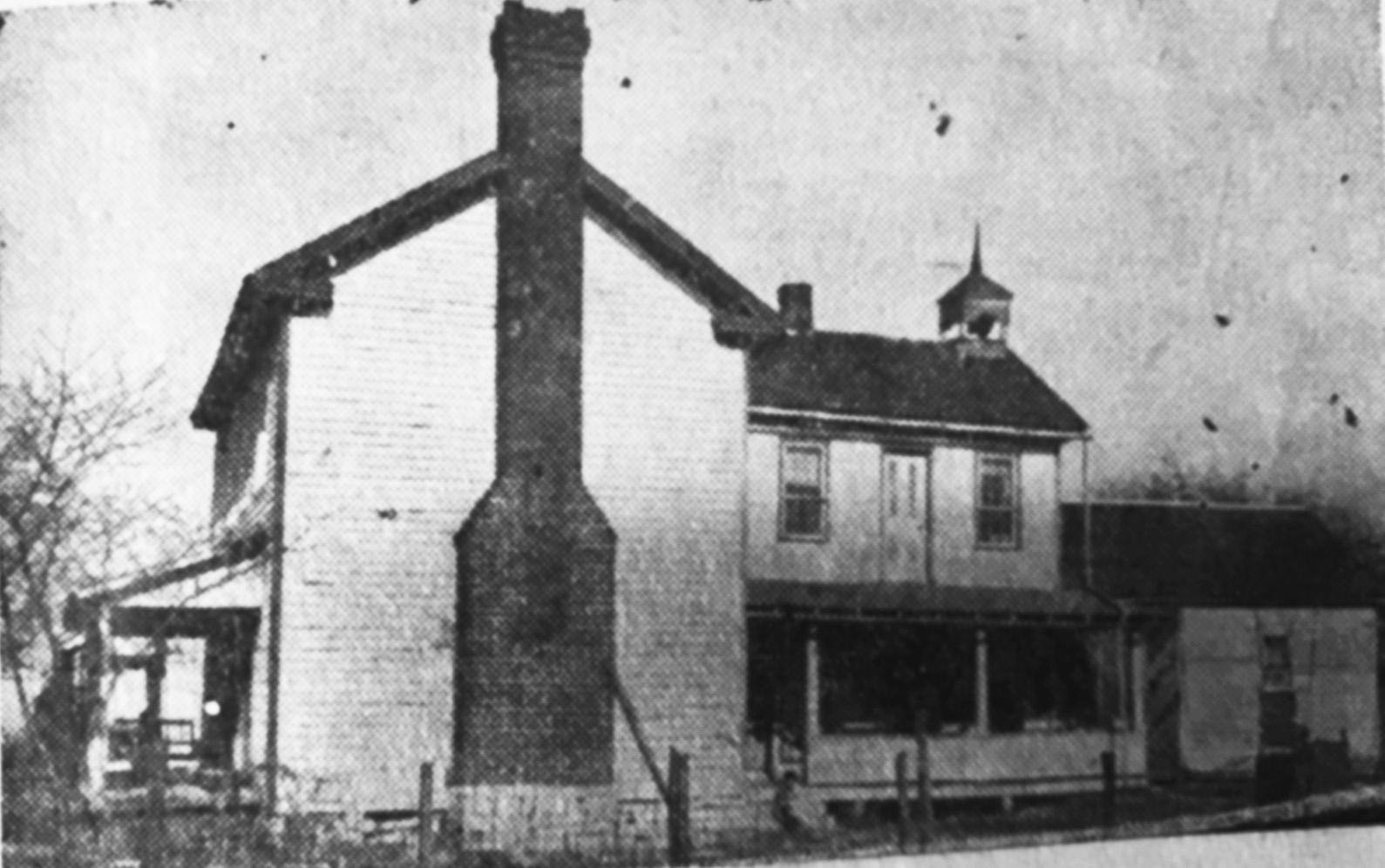Indian Creek Township town
lost to the ages
The former Ezra Kern tavern house in Fayetteville was in a good condition when the Indianapolis Sun Star printed the picture in 1941. Located near the intersection of current Old Farm Road and State Road 158, the house was razed in the early 1970s.
By Becky Buher
I recently ran across a newspaper clipping recounting an unfamiliar (to me) Lawrence County community and a long-lost crossroads tavern in Indian Creek Township. As we continue to remember the county’s history during this bicentennial year, it’s fascinating to learn of places that once were, to recount some of the people who lived there, and to think about what their lives might have been like. What follows comes from a story Thomas E. Kern wrote about a Fayetteville tavern, the White River Woods Ferry and a town named Liberty. It was published in the Indianapolis Sun Star on Dec. 7, 1941.
The Fayetteville tavern was in 1941 over 100 years old. The tavern was spawned when “teaming” was a regular business in Southern Indiana. It was active in the 1840s when a teamster would have been someone who drove a wagon pulled by draft animals — oxen, horses, or mules. Teamsters moved goods and commodities from place to place as needed, much as truck-driving teamsters move goods around the country today.
Kern wrote that the tavern was once “the nightly resort of teamsters plying up and down the old Woods Ferry-Bloomington Road. Goods of all descriptions were hauled from New Albany and often were taken on north to Bloomington and even to Terre Haute. Two days were required from New Albany to this place.
“The tavern, which was a modest affair even for its day, was patronized not so much for its accommodations for man as for the fact that it had a commodious wagon yard and stable room. Teamsters often slept on the floor in lieu of a bed, and the front room contained a grocery store where the proprietor, Ezra Kern, pioneer settler and landowner, attended his village customers. Whiskey was dispensed at 10 cents a quart.”
A short distance south of the tavern, not too far from Ezra Kern’s establishment was Woods Ferry.
Writer Thomas Kern continued, “Some four miles to the south the road crosses the east fork of White River, at a point still known (in 1941) as Woods Ferry. Here a ferry was maintained until comparatively recent times. Woods Ferry recalls the town of Liberty, one of several Lawrence county towns, which died a-borning. Settlers at Liberty apparently entertained high hopes that it would become a prosperous trade center.
“It was laid out in the bottoms near the conjunction of Salt Creek and White River, at a point just south of the mouth of the former stream, and about four and one-half miles from the county seat of Bedford. Originally it included a hotel, blacksmith shop, carpenter shop and large general store. Settlers moved in and houses extended well back into the bottoms. John S. Daughton of New Albany and Frank Tilly of Louisville were the proprietors of the store, bringing their stock of goods from New Albany and beginning business in the year 1829. Later, Alexander H. Dunihue of Bedford was manager for one year.
“In spite of the fact that Liberty was situated on what was then a main highway and on a river upon which during the winter season considerable flatboating was done conveying farm products down to the Mississippi, the town failed to grow, and in a few years only a few scattered dwellings remained. Now, no trace of the town can be found. The ferry, however, continued long after the town’s demise and was used for many kinds of traffic, notably for ferrying droves of livestock on route to Mitchell for shipment on the Baltimore & Ohio (railroad) to Cincinnati.
“Many are the tales still told (in 1941) by old settlers of drovers caught on the ferry when the cattle rushed in and the light ferry boat foundered. The usual procedure was to drive a few cattle or hogs upon the boat, put out from the bank and wait till the rest of the drove plunged into the river and swam across.
“The completion of the New Albany & Bloomington railroad to Bedford in the early 1850s put an end to teaming on the old Woods Ferry-Bloomington road and with it the prosperity of the old tavern.”
Thus ends the tale of a tavern in a town near a White River ferry crossing in a time long ago.
Source: Museum records, “IndianapolisSun Star,” Dec. 7, 1941.

